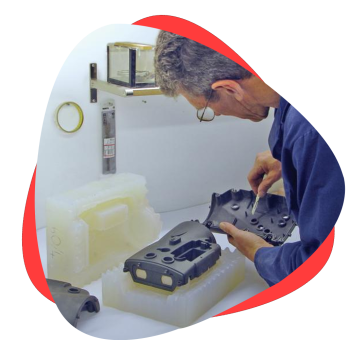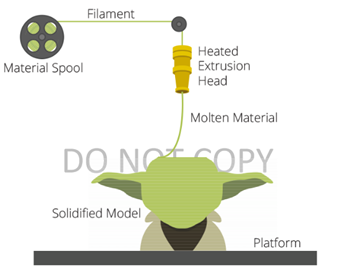VACUUM CASTING
- With best in class vacuum casting machine in-house, THINK3D offers high quality vacuum casting services and also provide various post processing options to go with it.

VACUUM CASTING
Turn your ideas to reality with our state of art vacuum casting capabilities. Our facility is equipped with entire range of 3D Printers, 10 CNC Machines, 2 Injection Molding Machines and have a passionate team to serve you.
Quick Online Quote
Upload files in Get Quote section and get quote within 4 hrs
Technical Competency
Technically qualified team in various mfg. technologies
Competitive Pricing
Highly competitive price and bulk discounts also available
NDA & IP Protection
All designs and data are kept in highly secure private server
Overview

Applications
- Prototypes for form, fit and function testing
- Prototypes directly constructed in production materials like ABS, Nylon, PU
- Low-volume production of end-use parts
materials
ABS
| Color | Tensile Strength (MPA) | Hardness (Shore A/D) | HDT |
|---|---|---|---|
| Translucent/White/Black | 32 | 74 D - 82 D | 7 |
Flexible Rubber
| Color | Tensile Strength (MPa) | Hardness (Shore A/D) | HDT |
|---|---|---|---|
| White/Black | 2 - 17 | 20 A -90 A | NA |
PP
| Color | Tensile Strength(MPa) | Hardness (Shore A/D) | HDT |
|---|---|---|---|
| White/Translucent | 32 | 74D | 79 |
PC
| Color | Tensile Strength (MPa) | Hardness (Shore A/D) | HDT |
|---|---|---|---|
| Transparent | NA | 80D | 95 |
PE
| Color | Tensile Strength (MPa) | Hardness (Shore A/D) | HDT |
|---|---|---|---|
| White/Translucent | 10 | 48D | 35 |
specifications
Materials: ABS, PC, PP, Nylon, ABS/PC
Bed Sizes: 2 mm (for text/ hole diameters etc)
Minimum Dimensional Requirement: 0.80 mm
Tolerance: ± 0.20 – ± 0.25 mm
Standard Accuracy: ± 0.3% (with lower limit on ± 0.3 mm).
Lead Time: 12 – 15 days
Mold Life: 20 – 25 shots
post processing
- Remove excess material from the part
- Apply putty & primer
- Spray painting
Clients

Think3D has been a great partner for us in supplying COVID-19 test cartridges on-time despite the pandemic challenges. When we came up with a new requirement needing a workforce of more than 25 people, think3D took up the challenge and arranged the workforce within 2 days. I highly recommend think3D for any manufacturing needs.
Sanket Srivatsav
Production In-Charge, Molbio

As a professor doing research on new materials, I needed a strong industry partner to assist us. think3D perfectly fit that bill. think3D team is highly knowledgeable on all manufacturing technologies and the team is very prompt in responding to all our requests. My research has been very successful, thanks to think3D team.
Dr. Karthik Chetan V
Asst. Professor, BITS Pilani

We found issue with one part at the time of assembly and needed a quick replacement. think3D team has quickly responded to our request, redesigned the part and printed it using metal 3D Printing and delivered in 3 days time. The part came out really well and the design was better than that of the actual one.
Rama Krishna
Senior Manager (IMM), BDL





























Frequently Asked Questions
Vacuum casting or vacuum duplication involves injecting a resin into a silicone mould. Because of its cost and deadline, this method is most suited to pre-series, with a faithful reproduction of the original model and a result close to the end result in the “right material”. Vacuum casting technology is recommended for the production of around ten to one hundred parts for mechanical or visual tests.
- Low weight
- Corrosion resistance
- Insulation properties
- Electrical properties
- Cheaper
- Easy to handle
- Surface properties
- Reusable